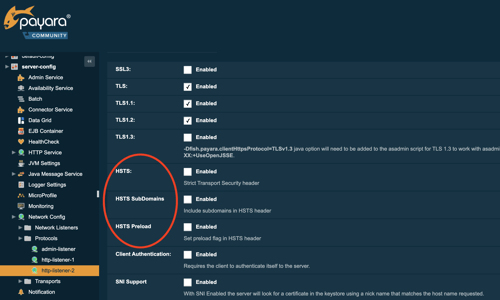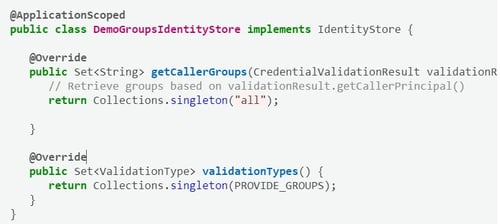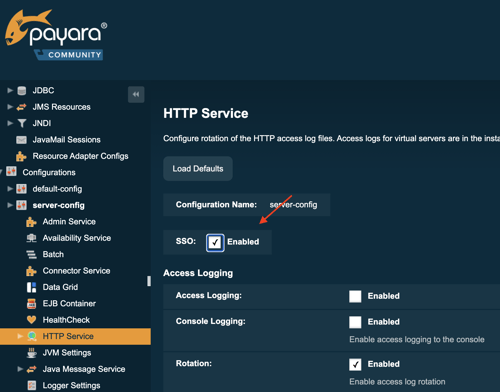Introduction to New AutoScale Feature Available in Payara Server
Published on 04 Jun 2021
by Rudy De Busscher
Topics:
New Releases,
AutoScale
|
0 Comments
Running your application sometimes requires multiple instances to handle the requests of the users. Within the Payara Platform, the Domain Data Grid helps you configure your environment to run your application in a cluster. Besides the setup of a cluster itself, many applications can benefit from an environment that scales dynamically.
The number of instances must increase when the application usage peaks and should decrease when activity is low to reduce the resource usage and the corresponding costs associated with it. The introduction of the AutoScale feature in Payara Server Community 5.2021.4 helps us achieve this dynamic scalability.
GlassFish 6.1 Should Not Be Used In Production: Here’s Why
Published on 27 May 2021
by Rudy De Busscher
Topics:
GlassFish,
JakartaEE,
Payara Platform
|
1 Comment
Earlier this week, Jakarta EE 9.1 was released. This is an update to Jakarta EE 9, adding support for JDK 11 - you can read more about it in our bloghere.
Alongside the Jakarta EE 9.1 release, GlassFish 6.1 has been released as a Compatible Implementation.
However, although GlassFish is still used by many - a legacy of the time it was supported by Oracle - we would argue it is NOT a good choice for running your enterprise applications in production.
If you are considering updating to more recent GlassFish versions, it might be better to consider more reliable, supported, and up-to-date alternatives. In this blog, I explain why GlassFish 6.x is not the best choice for your mission critical deployments.
Getting Started with Jakarta EE 9: Context And Dependency Injection (CDI)
Published on 18 May 2021
by Rudy De Busscher
Topics:
JakartaEE,
getting started with Jakarta EE
|
0 Comments
In this series about getting started with Jakarta EE 9, we look at various specifications and how you can use them for your next application. In the previous blogs of this series, we set up our development environment and had a closer look at implementing REST endpoints.
This time, I will explain a few features of Context and Dependency Injection (CDI). The CDI specification is an important backbone of Jakarta EE as it brings several specifications together. Over the years, it became more and more important as an increasing number of specifications started using CDI as the basis for it.
In this blog, I will tell a bit about the different scopes, the interceptor mechanism, and the Event system.
How to Configure the HSTS Header on Payara
Published on 12 May 2021
by Rudy De Busscher
Topics:
Payara Platform,
New Releases
|
1 Comment
The HTTP Strict-Transport-Security response header (often abbreviated as HSTS) tells the browser that it should access the website only using HTTPS, instead of using HTTP.
The May 2021 releases of the Payara Platform, Community version 5.2021.3 and Enterprise version 5.28.0, allow you to configure the HSTS header.
Create a Jakarta EE 8 Web Application with Payara Server and Visual Studio Code
Published on 01 May 2021
by Rudy De Busscher
Topics:
Payara Server 5,
JakartaEE,
getting started with Jakarta EE
|
0 Comments
How to Use OpenIdConnect with Payara Platform to Achieve Single Sign-on
Published on 22 Apr 2021
by Rudy De Busscher
Topics:
Security,
Payara Platform 5
|
8 Comments
When a user needs to access multiple applications in your environment, you should not require authentication for each application. If the user has already been authenticated for one of the applications, he or she should should not be asked for credentials when he accesses one of the other applications during the same browser session. This concept is called Single Sign-on where the authentication credentials are 'shared' in the environment and can be used by any application in that environment.
How to Use Single Sign-on with Payara Server Realms
Published on 20 Apr 2021
by Rudy De Busscher
Topics:
Security,
Payara Server 5
|
7 Comments
When a user needs to access multiple applications in your environment, you should not require authentication for each application. If the user has already been authenticated for one of the applications, he or she should should not be asked for credentials when he accesses one of the other applications during the same browser session. This concept is called Single Sign-on where the authentication credentials are 'shared' in the environment and can be used by any application in that environment.
Getting Started with Jakarta EE 9: How to Create a REST API with Jakarta EE 9
Published on 13 Apr 2021
by Rudy De Busscher
Topics:
getting started with Jakarta EE
|
11 Comments
In this second blog of the "Getting Started with Jakarta EE 9" series, we show you some basic Jakarta REST API usage scenarios. Most people are using the term REST or RESTful API just to indicate they do data transfer over HTTP, ignoring the "Hypermedia as the engine of application State (HATEOS)" part of REST.
The technology is used a lot lately to connect the front-end with the back-end. For Jakarta EE 10, read our Getting Started with Jakarta EE 10 blog.
How to Connect Payara to External Hazelcast Grid
Published on 25 Mar 2021
by Rudy De Busscher
Topics:
Production Features,
Hazelcast,
Payara Platform 5
|
2 Comments
The Domain Data Grid feature of the Payara products is powered by the Hazelcast library. It provides the necessary functionality for the Deployment Group (clustering functionality), Cache functionality, CDI cluster singleton, and monitoring data storage within Payara to name just a few features.
Since Hazelcast can cluster multiple instances into a data grid, it is possible to create a Hazelcast grid that comprises the Payara instances and some other instances included in other applications running outside of Payara.
Getting Started with Jakarta EE 9: Hello World
Published on 18 Mar 2021
by Rudy De Busscher
Topics:
JakartaEE,
Payara Platform 5,
getting started with Jakarta EE
|
0 Comments
Introduction
The release of Jakarta EE 9, at the end of 2020, was in many ways a historic event. The Java Enterprise framework is already 20 years old, having its first release in 1999. It has changed names a few times but the main concepts of the first release can still be found in this new release. During all those years, it has adapted itself to keep it up to date but has always adhered to its main principle of stability and backward compatibility.
.jpg)


.jpg?width=500&name=Getting%20Started%20with%20Jakarta%20EE%209%20Context%20Dependency%20Injection%20(CDI).jpg)




.png?width=500&name=MicrosoftTeams-image%20(46).png)
